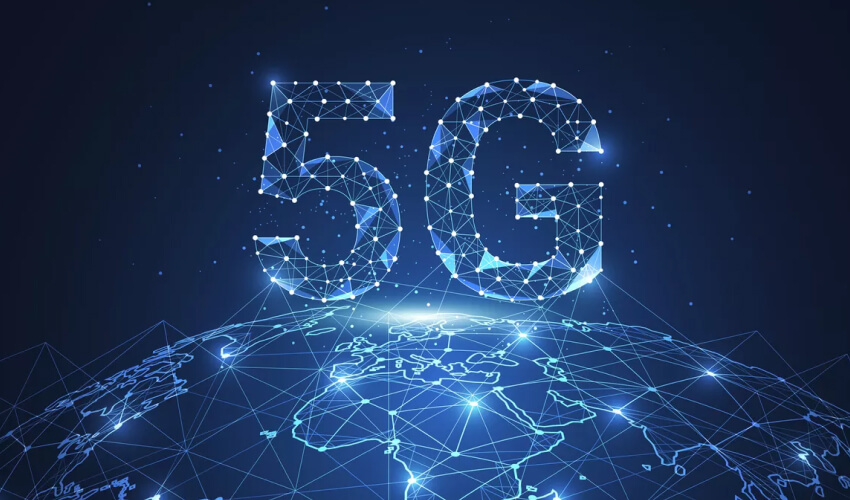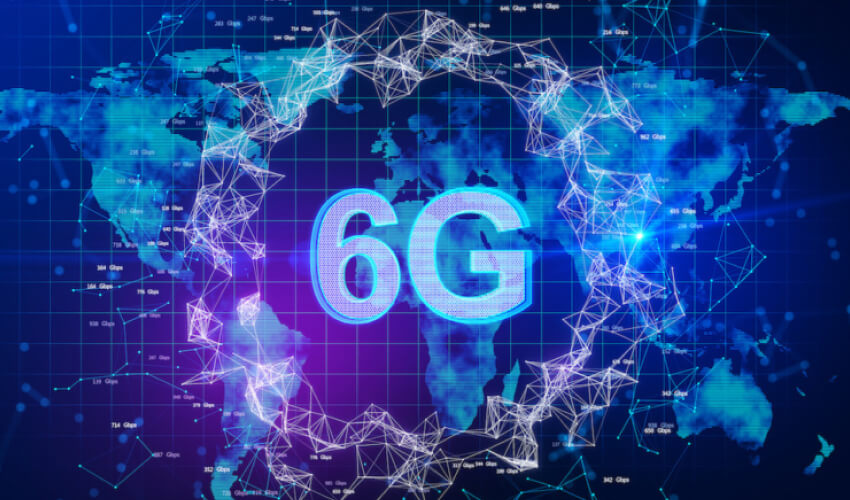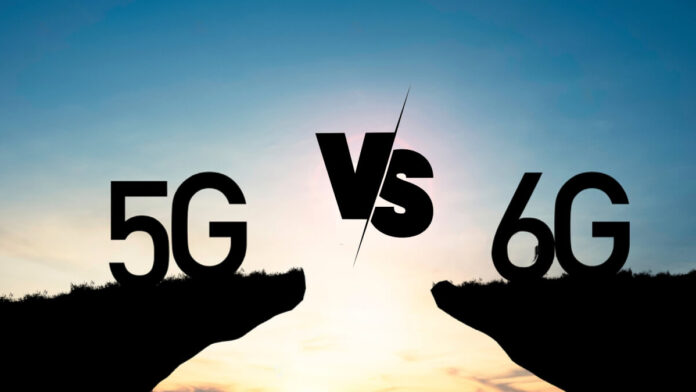Wireless technology is growing at a breakneck speed. And the advent of 5G and 6G are a perfect example of it. These two technologies have opened up a whole new world of possibilities for both consumers and businesses alike. The advent of these two networks has significantly changed the way we communicate with one another.
However, the question is are these networks same in their capabilities or there are some differences.
If you’re also wondering the same, then this post is for you. In this post, we will discuss some significant differences between 5G vs. 6G.
5G vs. 6G: How Are They Different?
What exactly is 5G?
5G or the fifth generation of cellular network technology, is the successor to the fourth generation, or 4G LTE. Released in 2019, 5G is way too advanced compared to its predecessors, 3G and 4G. The rate of data transfer is one of the most significant distinctions between 5G and its predecessors. The maximum theoretical speed of 4G LTE-Advanced is 300 megabits per second. The maximum theoretical speed of 5G is 10 gigabits per second, which is more than 30 times faster than the maximum theoretical speed of 4G LTE-Advanced.

The fifth-generation technology can operate in low-band, mid-band, or high-band mm waves, ranging anywhere from 24 GHz all the way up to 66 GHz. That’s the reason users are able to enjoy significantly higher data transfer speeds and a wider bandwidth capacity.
5G enabled previously inconceivable applications, including automated cars, the Internet of Things, and smart cities. In addition, 5G also helps in healthcare services. Many medical diagnostic and design tasks include processing large numbers of high-resolution photos and information. Using 5G technology, diagnostic imaging data such as MRI or CT scans can be transmitted instantly to any location in a matter of seconds.
It’s not just that; the advent of 5G has also significantly improved gaming experiences. The gaming industry has flourished ever since the advent of the fifth-generation technology. Many game brands have come up with VR (virtual reality) games, providing users with more realistic gaming experiences, all thanks to 5 G’s high bandwidth and low latency.
What exactly is 6G?
6G or the sixth generation of cellular network technology, is a successor of 5G technology. This technology is currently under development. However, many wireless communication companies have already started testing 6G networks in some areas. It is anticipated that the 6G network will be accessible completely by the year 2030.

It’s a no-brainer that it offers speeds that are much quicker than its predecessor. It is said to have a maximum speed of 206.25 gigabits per second (which is, of course, very high compared to its predecessors).
This new technology will operate in higher frequency bands than 5G, ranging from mm waves with a range of 30 to 300 GHz all the way up to radiation with a range of 300 to 3000 GHz. In addition to this, you can expect to get higher coverage and enhanced reliability with 6G as it makes use of a wider range of the spectrum.
The sixth-generation technological advancements are a far more significant revolution. It might usher in a brand-new era characterised by automated, intelligence-infused communities. It will provide unprecedented speeds and low latency, enabling its usage in revolutionary applications such as driverless cars, smart homes, and healthcare solutions by both individuals and corporations..
Undoubtedly, the advent of 6G technology is going to make significant improvements in people’s lives. It will result in higher living standards and enhanced environmental monitoring. In addition to this, it will bring virtual healthcare to an entirely new level.
Healthcare facilities would be able to serve their patients better and more quickly with the help of AR/VR/AI/holographic telepresence.
All in all, 6G technology will usher in a brand new era for the entire globe.
Let’s now see how the 6th generation technology is better than the 5th generation network. Here we go…
Significant Differences Between 5G and 6G Networks
Although both 5G and 6G have improvements over their predecessors, there are a number of key distinctions between 5G and 6G networks, which are as follows:
Bandwidth
6G network provides greater bandwidth capacity than 5G networks. It is because the 6G network employs the higher frequency bands. This means that 6G technology can make it possible for a greater number of people to access the network at the same time, in addition to supporting more data-intensive applications like virtual reality and live video streaming.
Speed
Both 5G and 6G technology offer speeds that are faster than 4G LTE; however, 6G technology takes this to an all-new level. It is anticipated that 6G would be able to give theoretical maximum speeds that are up to 100 times faster than the 5G network. 6G network utilises higher frequency bands on the wireless spectrum. The revolutionary speed capabilities that 6G is rumoured to bring will reportedly have far-reaching repercussions for a variety of different businesses.
Interconnected Ecosystem
The projected ultra-rapid speed would make it possible to establish instantaneous connections between any digital device, including smartphones, wearables devices, etc. It will enable the creation of an entirely interconnected ecosystem. In addition, it will make it easier to implement smart manufacturing units, and robots, thereby facilitating the beginning of the fourth industrial revolution.
Aside from that, the 6G technology is said to bring significant improvements in healthcare systems as well. It is going to promote telesurgery and telehealth. Also, the retail and financial sectors are anticipated to have a profound impact.
Latency
Latency is the amount of time, measured in milliseconds, that it takes for a signal to move from one location to another across a network connection. Ever since the advent of the 5G network, users have experienced amazingly low lag time. However, the response time experienced by users of 6G networks is even shorter than that of 5G networks. This is because 6G networks utilise higher frequency bands on the wireless spectrum, which enables faster transmission times between devices that are connected to a network.
Security
Both 5G and 6G networks provide substantial dangers to data privacy and security. However, 6G networks have the potential to present an even larger risk than 5G networks. It is because 6G networks will have a wider attack surface than 5G networks, as well as more complicated use cases, leading to new security flaws. In addition, the greater reliance on open-source software for 6G networks may present additional opportunities for cyberattacks.
In such as situation, businesses need to take measures to bolster their security protocols. They will need to stay updated and implement safeguards against potentially harmful parties, such as encryption, authentication, and so on.
Also See: What is VoLTE in Mobile Network and Benefits of Using it
Experience
Introducing new technologies to the public always has the goal of bettering the user experience. The arrival of 5G technology has improved the user experience across industries, from gaming to healthcare. Users can benefit greatly from low-latency connections, such as 6G. The impact of the 6G network on Internet of Things (IoT) devices like smart household appliances and connected vehicles is obvious. It is because the 6G network can handle more data at once without sacrificing speed or consistency. Users can expect to have an even more streamlined experience, with the added benefit of being able to process more information all at once.
Wrapping it up…
Here we conclude our 5G vs. 6G network. The differences between the 5G network and the 6G network will help you understand them much better. There is no doubt that 6G technology will be superior to its predecessors in terms of speed, latency, and other areas.
The 6G technology is sure to have far-reaching effects on almost every sector, including retail, healthcare, telecommunications, etc. It can go beyond 5 G’s technical restrictions and usher in unprecedented improvements in a variety of connectivity domains. With the arrival of 6G technology, automation will undoubtedly play a central role in streamlining and bettering people’s daily lives.


